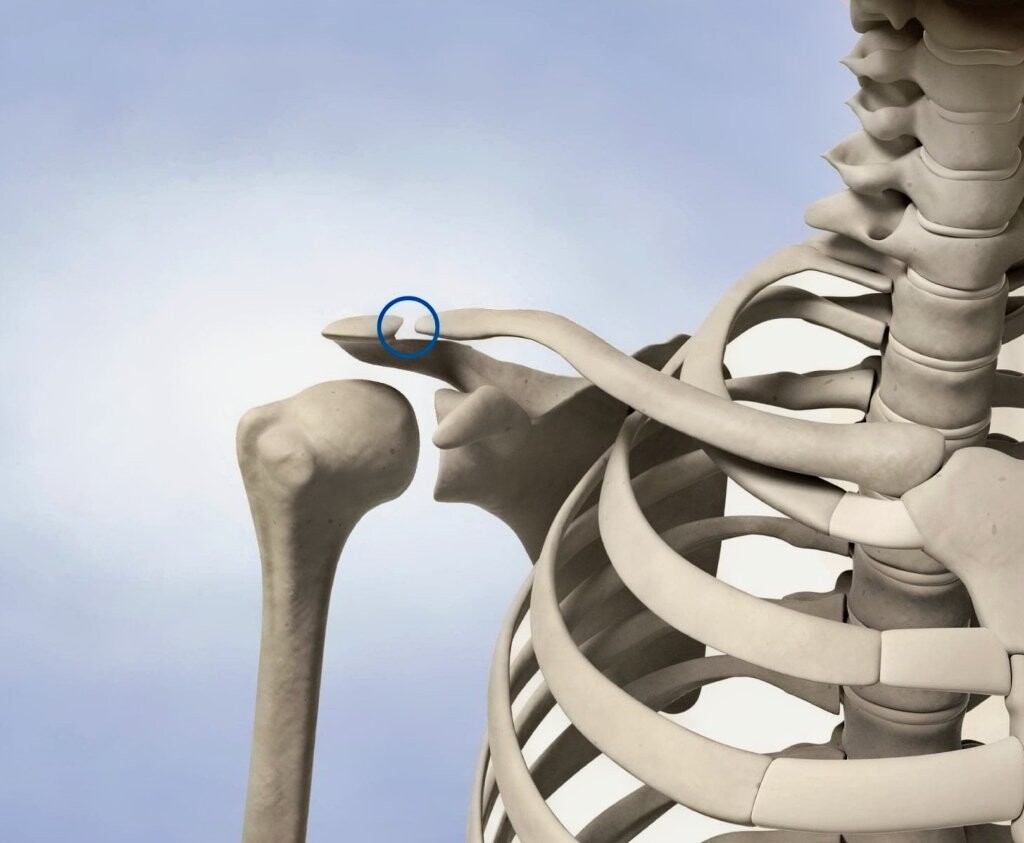The clavicle, that bone situated in the upper chest region, develops during the third embryonic stage, marking not just an advancement in physical growth but also symbolizing the commencement of a dance between movement and personal evaluation.
Emotional Conflicts of the Clavicle in Biodecoding
This process can be likened to the myth of Hercules facing his trials, where the belief in one’s ability to overcome adversities, the “I can handle everything,” plays a pivotal role.
Frequently, difficulties in this area may reflect an unmet emotional need for paternal support, leading to the conclusion that one must seek such support to mature.
Emotional Conflicts Associated with the Clavicle
The sternoclavicular joint is related to the “idea of accomplishment,” suggesting that issues in this area may arise from the perception of an inability to execute projects or achieve personal goals.
Conversely, the acromioclavicular joint is linked with the “notion of separation,” indicating that difficulties here may reflect a fear of loss or separation from loved ones or familiar situations.
Physical Obstruction of the Clavicle
The clavicle is particularly prone to injuries such as fractures and sprains, which manifest through sharp and unexpected pain. These types of physical ailments not only affect an individual’s physical well-being but may also be an indicator of underlying emotional obstacles.
Emotional Blockage of the Clavicle
These are often intertwined with challenges of authority. Individuals experiencing sudden pain in this area face difficulties both in accepting orders and in imposing their will upon others.
The essence of the emotional conflict lies in the desire to pursue a different path than the one dictated, highlighting an internal struggle between the need for personal affirmation and the pressure to conform to external expectations.
This dilemma reflects a deep quest for autonomy and the need to reconcile with authority figures in their life, whether real or internalized.
Mental Blockage Associated with the Clavicle
Understanding that every individual has the inalienable right to voice their opinion and make decisions about their life is crucial for overcoming the mental blockages linked to the clavicle.
This recognition often faces the obstacle of anxieties that, by dominating a person’s actions, perpetuate their submission to the will of others.
A common facet of this mental blockage is the tendency to self-criticize for harboring rebellious thoughts or for perceiving a lack of strength to carry out desired actions.
This self-criticism is based on the belief that emotional or physical pain is a self-imposed punishment for failing to meet one’s own or others’ expectations. This cycle of guilt and punishment reflects a profound internal conflict that needs to be addressed to move towards self-affirmation.
The fear of authority figures, rooted in childhood experiences where parents or other adults represented a source of fear, can persist into adulthood, affecting power and authority relationships. However, it is essential to recognize that submission patterns learned in childhood do not need to dictate adult behavior.
The key to breaking free from this mental and emotional blockade lies in the conviction that control over one’s life rests in one’s own hands, not in those of others. This step towards self-assertion and emotional independence is crucial for a more fulfilling and authentic life.




